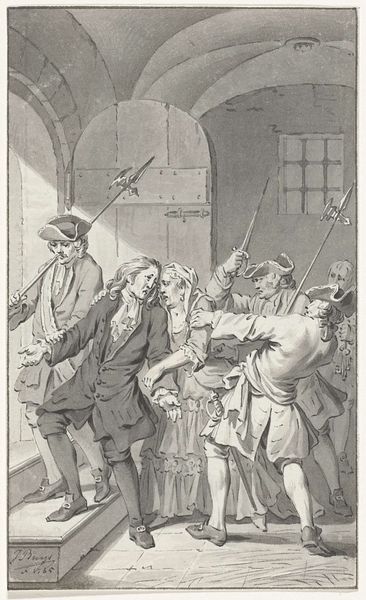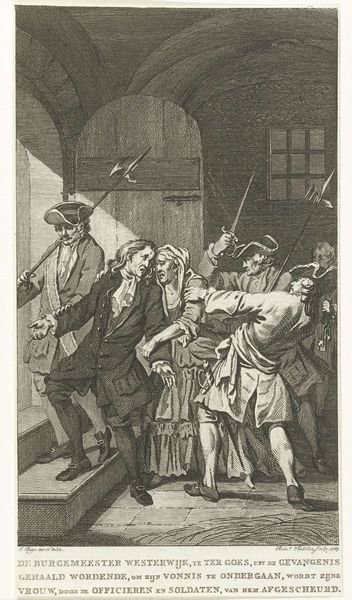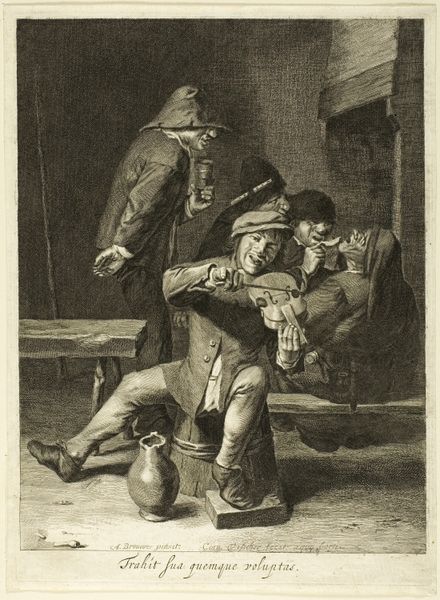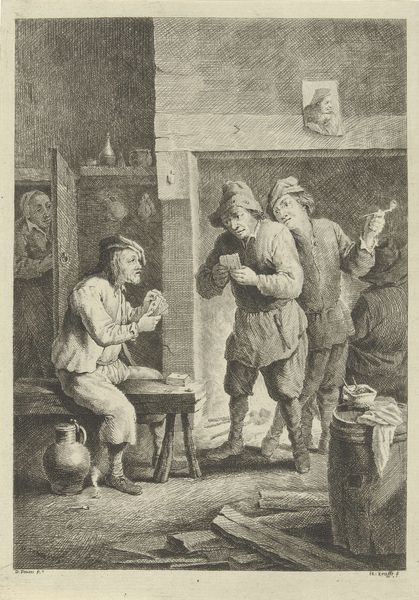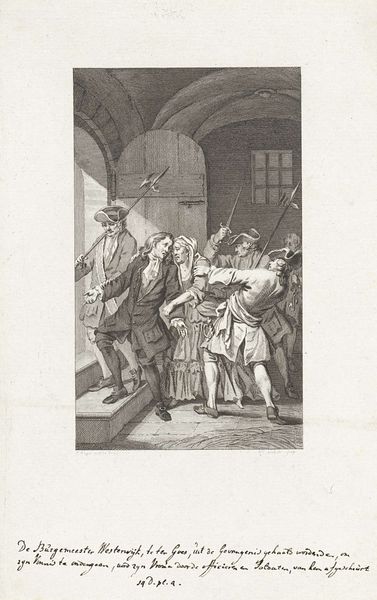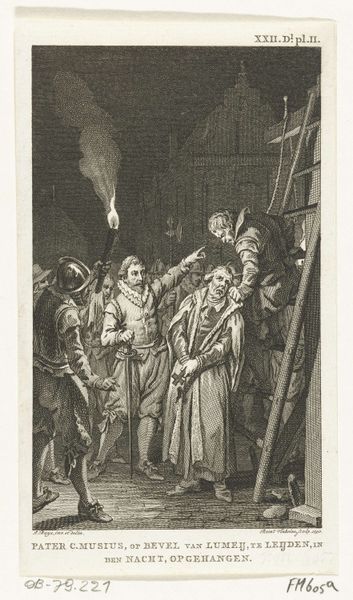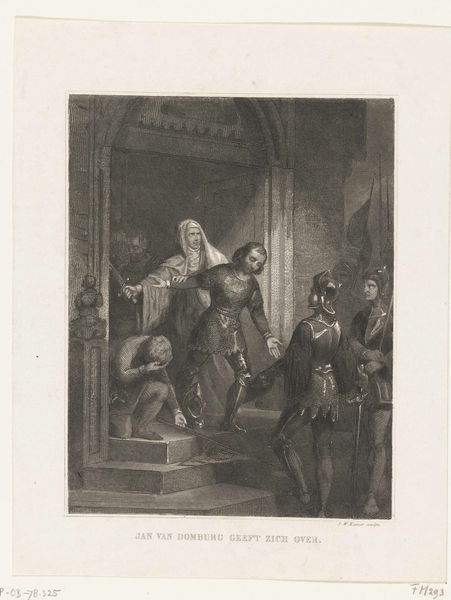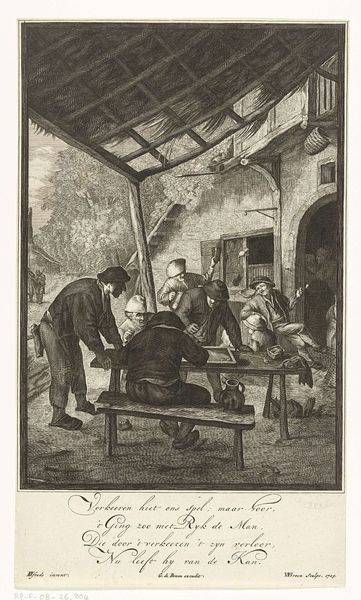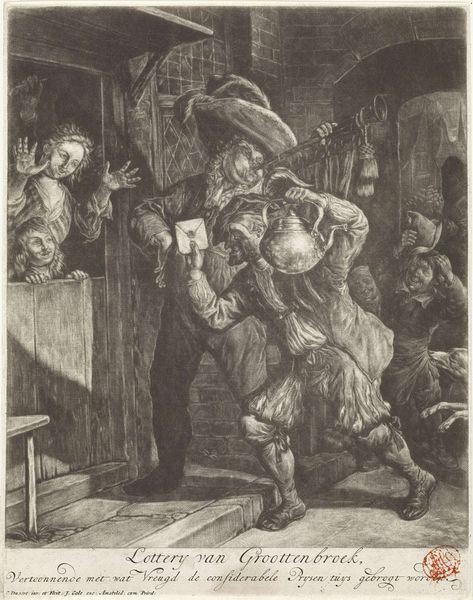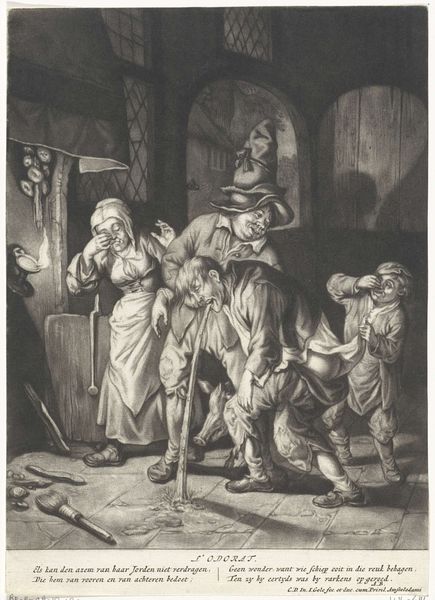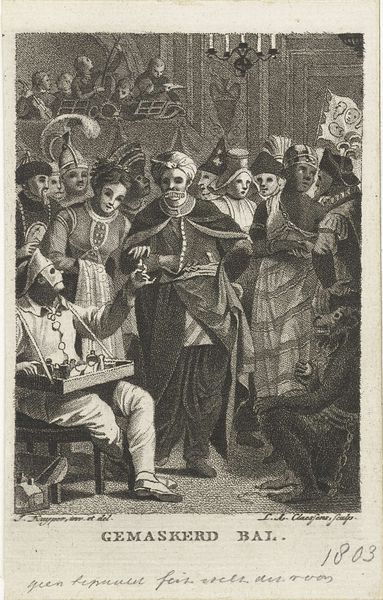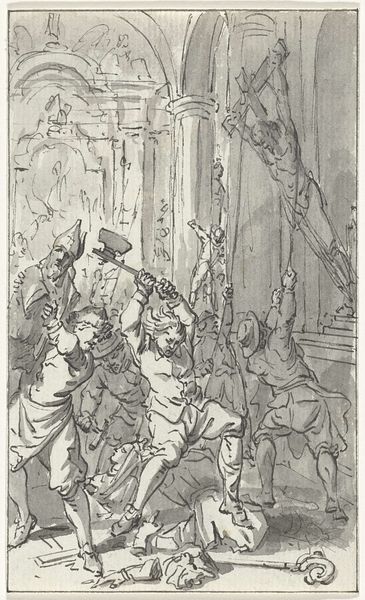
print, etching
#
dutch-golden-age
# print
#
etching
#
old engraving style
#
portrait reference
#
genre-painting
Dimensions: height 216 mm, width 154 mm
Copyright: Rijks Museum: Open Domain
Curator: We’re looking at Cornelis Dusart’s “Oktober,” an etching dating from 1679 to 1704, held at the Rijksmuseum. What strikes you first about it? Editor: It's incredibly textured! The layers of shading give it such depth. You can almost smell the musty cellar depicted, full of drinking and merry-making. It makes you think about the conditions required to even produce wine! Curator: Exactly. Dusart’s technical skill is quite impressive here. The density of the etching lines communicates the heavy, rustic atmosphere. It also hints at the division of labor inherent in wine production and consumption in Dutch society at the time. Editor: This makes you consider who would have been producing wine at this period in Dutch history, and who might have had the power to commission a print such as this? Was this sort of subject matter common or unusual? Curator: Genre paintings showing daily life became fashionable. Think of it, prints like these circulated widely. This imagery would likely appeal to those rising merchants keen to celebrate Dutch commerce. Editor: Notice also that it features grapes hanging from the cellar ceiling! Are those real or purely decorative? Do we even care? It is such a rich cultural marker! These aren't refined aristocrats – it's the jovial atmosphere of the lower to middle classes presented and made palatable. Curator: Well, what it demonstrates is the material conditions around that specific social environment; it hints to us about class aspirations that go hand in hand with the print. Editor: Right, we're dealing with how such displays shape identity and create social perceptions about a time that’s very different than ours. This slice-of-life image serves both as art and as a social artifact reflecting societal values. Curator: Thinking about Dusart's role and his skill, it’s very obvious that he understood and masterfully communicated his patron's sensibilities. Editor: Ultimately, examining its form offers us such insightful keys, to what the 17th-century Dutch perceived their society, through both production and appreciation.
Comments
No comments
Be the first to comment and join the conversation on the ultimate creative platform.
